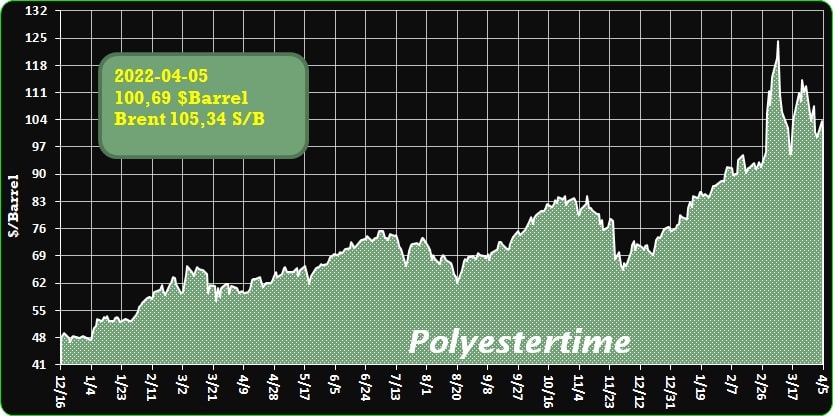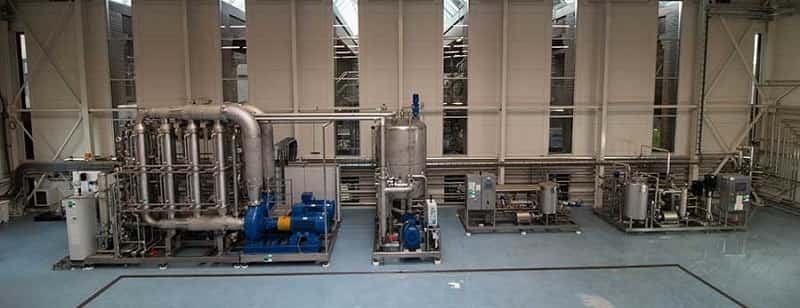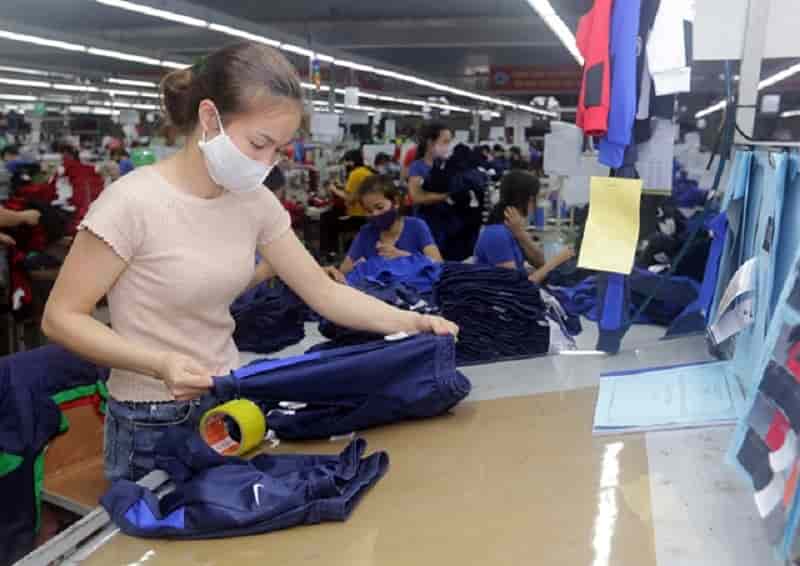Bio-based-polymer – Outlook-textile-industry 05-04-2022 - Arhive
Bio-based-polymer – Outlook-textile-industry
Crude Oil Prices Trend

AFTERLIFE demonstrates a new way of wastewater treatment that simultaneously recovers compounds of interest while converting remaining organic matter into a high-volume added value bio-based polymer.
In the AFTERLIFE project, a research team of 14 project partners from seven European countries successfully demonstrated a new way of wastewater treatment that simultaneously recovers compounds of interest while converting the remaining organic matter into a high-volume added value bio-based polymer. The project started in September 2017, coordinated by Dr. María López from IDENER (Spain), and ended in February 2022. Bio-based-polymer – Outlook-textile-industry
AFTERLIFE Pilot Plants
The AFTERLIFE pilot plants have been deployed at BBEU premises in Belgium. The project consortium validated the technology at technology readiness level (TRL) 5. The BBEU team developed and operated four pilot lines for the processing of the following four wastewaters included in AFTERLIFE:
- Wastewaters from the confectionery industry
- Wastewaters from cheese manufacturing
- Wastewater from citric fruit processing – fruit juice line (“JL”)
- Wastewater from citric fruit processing – essential oils (“EO”) line.
The treatment capacity of the operated pilots was one cubic metre of wastewater per day. The different pilot lines were operated sequentially and stopped at the end of August 2021. Essential oils and phenolic extracts production were comparable at lab and pilot scale. The pilot provided oils and extracts that could be tested in food products. The filtration step of all the wastewaters showed good results. For PHA (polyhydroxyalkanoates) production, different alternatives were tested. These included the use of different types of bacterial cultures (pure and mixed cultures) and operation times. The results indicate the necessity of a fine control system in order to achieve a stable PHA production. Bio-based-polymer – Outlook-textile-industry

-Bright outlook for textile industry but investors should still be cautious
HÀ NỘI The textile and garment industry is forecast to have a bright prospect in 2022, but as share prices have increased sharply since 2021, many stocks may not continue to rise significantly.
As a result, analysts say investors should only prioritise enterprises with good fundamental growth. Bio-based-polymer – Outlook-textile-industry
Bright outlook
At the end of 2021, US President Joe Biden signed a law banning the import of cotton materials produced in Xinjian, China into the US. US Customs and Border Protection estimated that about US$9 billion of cotton products were imported from China in 2021.
This can be seen as a great opportunity for Vietnamese cotton yarn companies such as Việt Nam National Textile and Garment Group (VGT), Damsan Joint Stock Company (ADS), and Phong Phú Corporation (PPH) among others.
It is similar to what happened in Europe in March 2021, when a series of major international fashion brands such as Nike, H&M, Uniqlo, and Zara announced they would stop using cotton materials from Xinjiang.
China’s share of textile and yarn exports to Europe fell from 52.4 per cent in 2020 to 44.7 per cent in 2021.
Việt Nam became the EU’s sixth-largest non-regional textile supplier in 2021, accounting for 3 per cent in value.
According to the European Textile and Apparel Federation (Euratex), the EU textile industry witnessed a strong recovery after COVID-19. Specifically, the value of textile and garment output had increased back to pre-pandemic levels by the end of November 2021. Bio-based-polymer – Outlook-textile-industry
Meanwhile, the International Monetary Fund (IMF) and the World Bank (WB) forecast global GDP growth to reach 4.9 per cent in 2022, and world textile demand in 2022 will return to 2019 levels, reaching about $740 billion.
The recovery of the world textile and garment industry will also help Việt Nam’s export turnover to complete the plan set out in 2022, at $43 billion, an increase of $4 billion compared to the figure of $39 billion in 2021.
Large textile companies such as Garment 10 Corporation JSC (M10), Century Yarn JSC (STK), Thành Công Textile Garment Investment Trading Joint Stock Company (TCM) have all had enough orders until the second quarter of and the third quarter of this year.
Profits between regions
Despite facing many difficulties in the third quarter due to the tight distancing policy amid COVID-19, 2021 will be a successful year for textile and garment enterprises.
According to estimates of VNDirect Securities (VND), total revenue in the fourth quarter of 2021 of listed textile companies increased by 24.1 per cent thanks to the recovery of textile companies in the south. After the end of the lockdown, most southern companies were running at 85-90 per cent capacity, compared with 50-60 per cent capacity in the third quarter. Bio-based-polymer – Outlook-textile-industry

-Bright outlook for #textile-industry but investors should still be cautious
–MEG-firms on lower supply, still pressured by polyester-output-cut
–Nylon-filament and textile-industry under severe pandemic-situation
-The cost transmission effect is limited, and PP-fell-after-rising-in-March
-Production contraction spreads to HC-PSF and low-melting-PSF
–Evrnu Develops And Launches Breakthrough Material Made From 100% Textile-Waste And 100%-Recyclable
–OPEC wants Russia as an oil-ally, in peace and in war
Bio-based-polymer – Outlook-textile-industry
